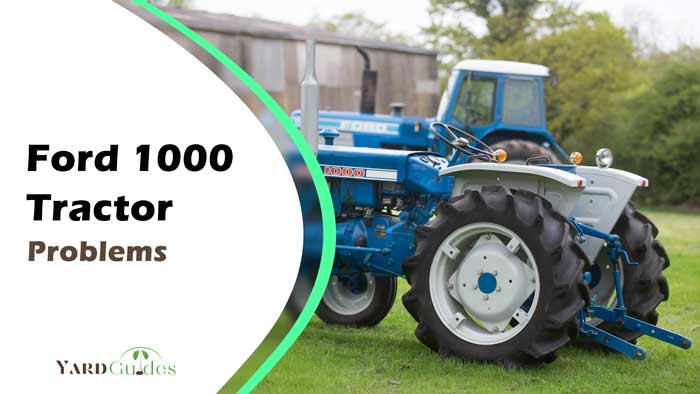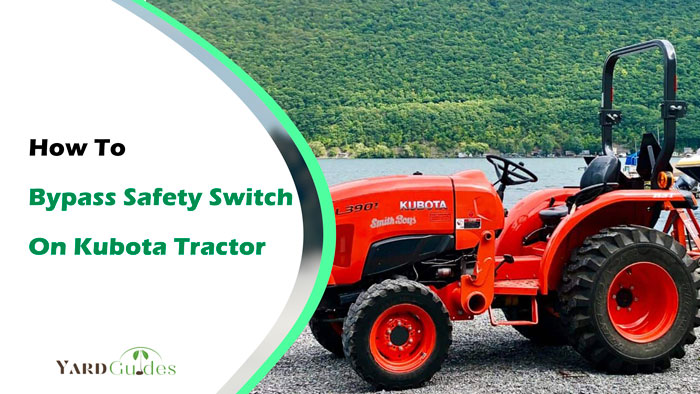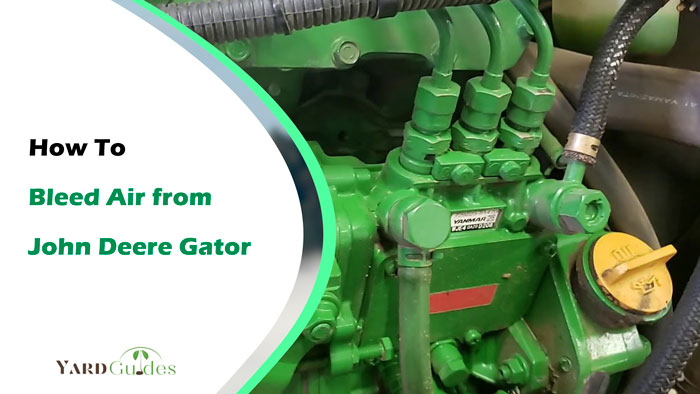The Ford 1000 tractor was manufactured from 1973 to 1976. This compact utility tractor is powered by a 1.3 L two-cylinder diesel engine capable of producing 25 horsepower at 2,500 rpm. Despite its reliable performance and excellent durability, this utility tractor has several problems.
But what are the common Ford 1000 tractor problems? One frequent issue with these tractors is air blowing out of the intake. Other issues you may encounter are the engine not starting, rust damage, and loss of power. In addition, replacement parts are relatively expensive and sometimes hard to find.
Interested in knowing more about the common problems with the Ford 1000 tractor? This guide has all the answers to the questions you might have. Stay tuned!
Typical Issues With The Ford 1000 Tractor
This table summarizes the common problems you may encounter with your Ford 1000 tractor and the possible solutions.
| Problems | Solutions |
| Air Blowing Out of the Intake Valve | Replace the damaged intake valve |
| Adjust the valve timing | |
| Rebuild or replace the distributor | |
| Loss of Power | Clean the fuel tank vent and replace the fuel cap |
| Ensure the gasket for the fuel bowl is correctly installed | |
| Flush out the old fuel and add new and quality fuel | |
| Engine Won’t Start | Replace the starter switch |
| Change the starter solenoid | |
| Rust Damage | Clean out all the rust |
| Repaint the tractor | |
| Parts Availability Issue | Invest in other newer Ford tractor models |
What Are The Common Ford 1000 Tractor Problems?
Are you considering getting a 1973, 1975, or 1976 Ford 1000 tractor? Below are some issues these compact utility tractors are known for.
1. Air Blowing Out of the Intake
This problem is familiar to the 1975 Ford 1000 tractor. Sometimes, air may blow out of the intake valve, yet it is supposed to supply the air to the engine.
The common cause of this problem is a failing intake valve, causing a backfire. It could also occur due to a valve timing issue or a worn-out distributor rotor or cap.
How To Fix?
You can fix this issue by following a step-by-step guide below.
Step 1: Inspect the intake valve for damage. If it is burnt, bent, or broken, replace it.
Step 2: Check the valve setting. If the timing is off, you should adjust the valve, ensuring it is neither too tight nor loose.
Step 3: Next, replace the distributor if it is damaged beyond repair. But if not, you can rebuild it.
Tip: One of the best ways to prevent this problem is to keep a healthy exhaust system.
2. Loss of Power
Another problem associated with the Ford 1000 tractors, especially the 1976-year models, is loss of power. When this issue occurs, the tractor may fail to rev up and sound like it is misfiring.
However, after bleeding the fuel system, your tractor may run fine for 20 to 30 minutes before it loses power again. Also, the problem remains even after replacing the fuel filter and the fuel line.
Sometimes, a blocked fuel tank vent could cause this problem. It could also occur due to an incorrectly installed gasket for the fuel bowl or using contaminated fuel.
How To Fix?
Some of the possible solutions are given below with steps.
Step 1: Run the tractor for a bit. Then, open the fuel cap and listen if it is sucking air in or the tank is making creaking, inflating noises. Clear out the fuel tank vent and replace the cap if it is.
Step 2: If the above does not fix the issue, inspect the fuel bowl gasket to see if it is properly installed. Then, install it correctly.
Step 3: Alternatively, flush out all the old fuel. Then, buy new fuel from a reputable store and refuel.
Tip: The important thing about diesel engines like the Ford 1000 is changing the fuel filter religiously.
3. Engine Won’t Start
Sometimes, when you turn the switch to heat up the glow plugs of your Ford 1000 tractor, everything will work fine. However, if you turn the button to start the tractor, it may fail to start.
Besides a bad starter switch, another cause of this problem is a faulty starter solenoid or a bad key switch. A faulty neutral safety switch or bad wiring could also result in this problem.
How To Fix?
Here are step-by-step instructions on how you can fix this issue:
Step 1: Apply a voltmeter to the starter switch to confirm no power at the output to the solenoid. If there is no power, replace the starter switch.
Step 2: Check the voltage starting at the key switch and following the wires through the neutral safety switch and onto the starter solenoid. If you get 12 volts, you should replace the solenoid.
Tip: You should regularly inspect the wiring to and from the starter for any loose connection to prevent frequent starter switch problems.
4. Rust Damage
Over time, Ford 1000 tractors with the original paint may begin to rust on some surfaces due to age. Rust damage may also occur when your tractor has only 1600 hours on it.
How To Fix?
Below are some practical ways to fix the rust problem on your Ford 1000 tractor:
Step 1: Clean out all the surface rust using commercial rust cleaners like WD-40 or white vinegar.
Step 2: Repaint your tractor.
Tip: Regularly using a high-quality automotive protectant or wax on your tractor may help prevent or minimize rust damage.
5. Parts Availability
The Ford 1000 tractors are no longer being manufactured. Their production stopped in 1976. Ford even stopped the support of these old imports around 2008.
Because of this, there is a problem with the availability of replacement parts. And once you find the parts, they come at a steep price.
How To Fix?
The only solution would be to invest in other Ford tractor models still in production.
Tip: With good and regular maintenance, you can minimize repairs and the need to buy replacement parts.
Final Words
Compared to its competitors, the Ford 1000 tractors are prone to few problems, thanks to their reliable performance. Apart from the problem with parts availability, other Ford tractor problems are loss of power and rust damage.
Additionally, you may encounter issues with the engine not starting and air blowing out of the intake valve. But nothing to worry about, though, because most of these problems are easy to fix by yourself. The biggest downside is finding the parts, which can be pretty expensive.



